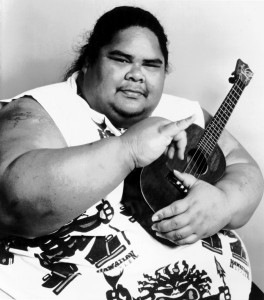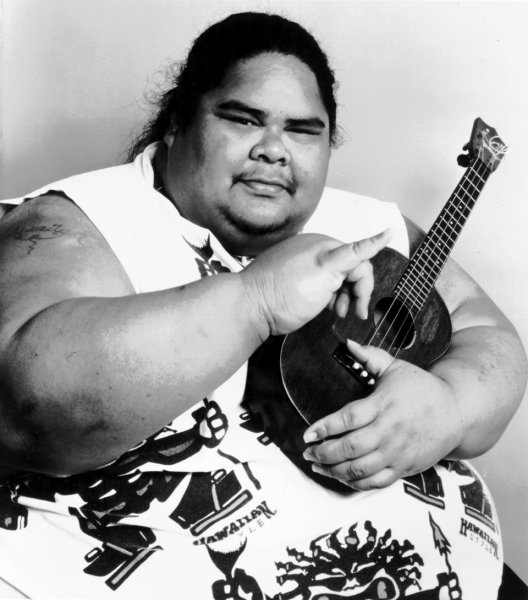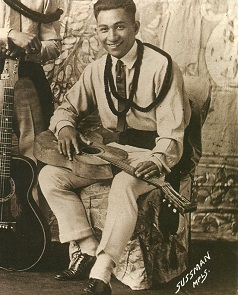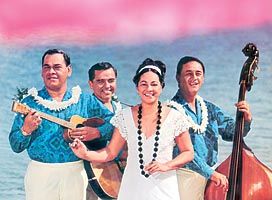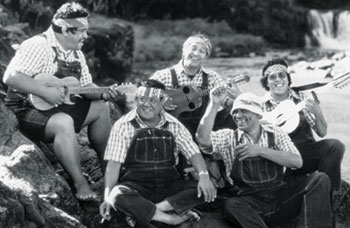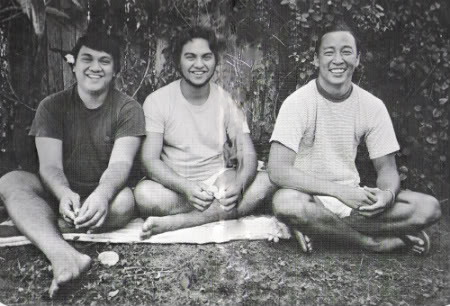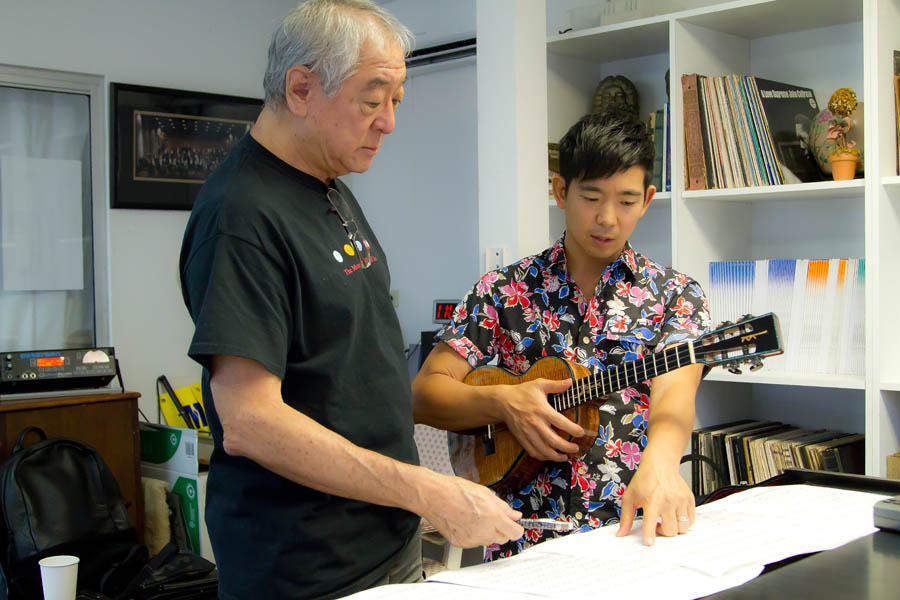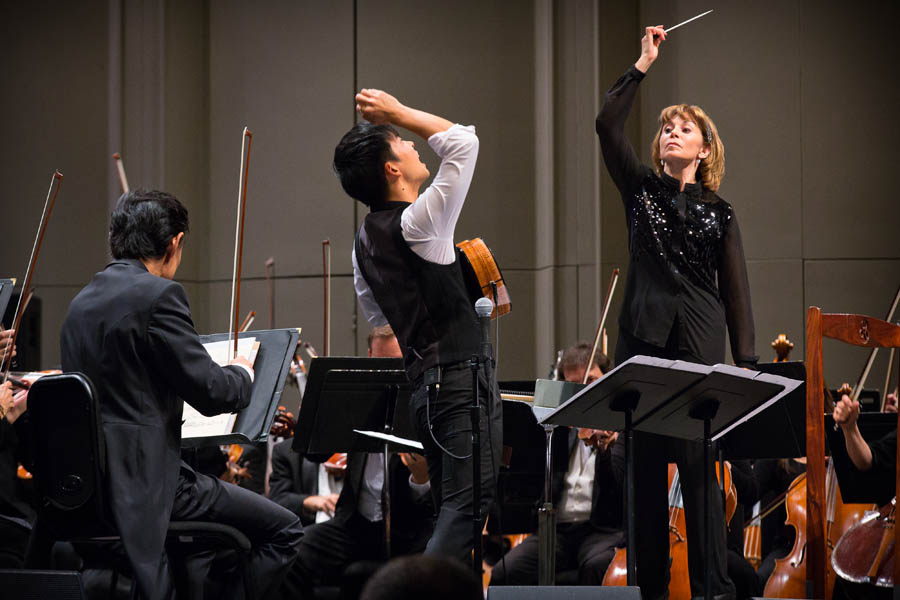
By Kenny Berkowitz
They’re young, they’re phenomenally talented, and they’re dreaming of becoming the next Jake Shimabukuro. And why shouldn’t they? Meet the future stars of Hawaiian ukulele.

- Brittni Paiva
Brittni Paiva
Hometown: Hilo, Hawaii
Covers: “Boogie Woogie Bossa Nova,” “Somewhere Over the Rainbow,” “Take Five”
Only 26, Brittni Paiva is already one of the island’s most accomplished musicians, and holds the unique position as Hawaii’s premier Jewish ukulele player (her Kamaka has Hebrew letters spelling out “God” inlaid on the fretboard, and she incorporates Hebrew prayers into her repertoire). She started playing piano at four years old, took up uke at 11, and followed with slack-key guitar, electric bass, drums, synthesizer, and loops. Paiva talks about pushing against “ukulele music barriers,” incorporating elements of classical, electronic dance music, flamenco, jazz, Latin, pop, reggae, and world beat into her sound. She’s performed duets with Carlos Santana, Tommy Emmanuel, and Dominator Pieranunzio, and her most recent album—Tell U What, produced by Tom Scott and featuring guest turns by Michael McDonald, Arturo Sandoval, and Ray Parker Jr.—won best ukulele album and best instrumental composition at the 2013 Na Hoku Hanohano Awards, adding to her 2005 and 2007 awards for most promising artist.

- Kalei Gamiao
Kalei Gamiao
Hometown: Haleiwa, Oahu
Covers: “Ain’t No Sunshine,” “Kiss from a Rose,” “Viva La Vida”
At 13, Kalei Gamiao needed something to keep himself busy while recovering from a baseball injury. He chose ukulele and fell in love at first strum. He began with the masters from the older generation—Alfred Canopin, Gordon Mark, Byron Yasui, Benny Chong, and Kimo Hussey—before moving on to covering guitar rock idols like Bucket-head, Yngwie Malmsteen, Joe Satriani, and Steve Vai. After 14 years of practicing every day, he’s become a stunning player with a deep appreciation for the instrument’s roots.
On his two albums, Contemporary Ukulele Instrumental (2008) and Redefined (2012), he’s embraced jazz, rock, pop, classical, and funk, approaching the music with a light touch and radiating the pure pleasure of playing from the heart. “One of the beautiful things about music is you can express any emotion you want,” he says. “I get to communicate all those different feelings, and what I’m doing on ukulele is simply having fun.”
As Shimabukuro did when he was starting out, Gamiao has amassed a significant following by performing in Asia, but he has plans to embark on a major North American tour next year.

- Andrew Molina
Andrew Molina
Hometown: Wailuku, Maui
Covers: “Hotel California,” “Payphone,” “Shake It Off,” “Sweet Child O’ Mine”
Music flows through Andrew Molina’s veins: His father, Jay Molina, played electric bass in Music Magic, a jazz combo that was a local phenomenon in the 1980s. His grandfather, Henry Molina, played saxophone as the youngest of nine brothers in the Molina Brothers Orchestra.
Henry never pushed Jay, so Jay never pushed Andrew, who showed little interest in music until the first time he heard Jake Shimabukuro. At that point, when Molina was 13 years old, everything shifted; he started playing ukulele and hasn’t stopped since.
Mixing equal parts rock rhythm guitar and Hawaiian music, Andrew composed eight of the 11 songs on his debut album, The Beginning, which was a finalist in the 2014 Na Hoku Hanohano Awards for ukulele album of the year. “I know the history,” says Andrew, who performs with both his father and grandfather, “and I hope to continue the Molina tradition.”

- Kris Fuchigami
Kris Fuchigami
Hometown: Keaau, Hawaii
Covers: “Can’t Take My Eyes Off You,” “Classical Gas,” “Dueling Banjos,” “Europa”
At 14, only a year after he’d begun playing ukulele, Kris Fuchigami took third place at the Hamakua Music Festival, held annually on the Big Island. He felt good, but not good enough, because he wanted to win.
So he went home, worked even harder, and came back at 15 to win the grand prize, playing two pieces by Shimabukuro—“Crosscurrent” and “Orange World”—and playing them fast. In the nine years since, he’s been giving (and taking) ukulele lessons, studying music theory, practicing four to five hours a day, composing his own first-rate instrumentals, and releasing four EPs, including the recent 31 Miles, about his experience running an ultra-marathon.
Now 24 years old, he’s no less driven than he used to be, and his technique has grown enormously, adding new emotional colors as he continues to chase the master. Asked why he began playing, Fuchigami has a two-word answer: “Jake Shimabukuro.”

- Corey Fujimoto
Corey Fujimoto
Hometown: Haleiwa, Oahu
Covers: “Pachelbel’s Canon in D,” “Smokey Mountain Lullaby,” “The Mystery”
For his day job, Corey Fujimoto works at the Ukulele Site, a website and retail store on Oahu’s North Shore, where he’s recorded more than a thousand video demos and tutorials, in addition to visiting with local builders across the Islands.
He’s almost entirely self-taught, especially when it comes to the classical pieces he’s known for, Bach’s Violin Sonata No. 1 and Mozart’s Rondo Alla Turca, which he transcribed himself—and he’s just as skilled on acoustic guitar as he is on ukulele, which is saying a lot.
He plays both on his 2013 debut album, Fables, an incomparably delicate collection of pastorals backed by slide guitar, strings, and drums. Like his contemporaries, Fujimoto is gaining a following in Asia, and this year performed at the Taiwan Ukulele Festival and in Hong Kong.

